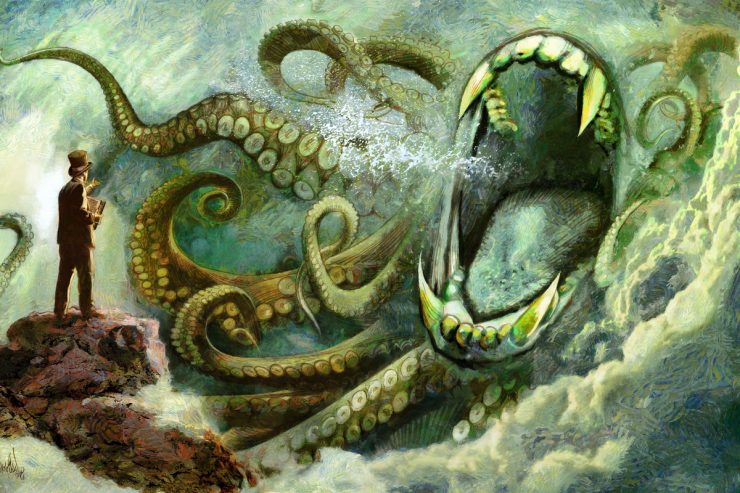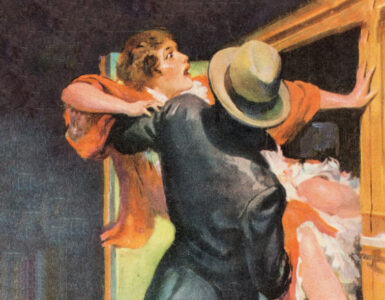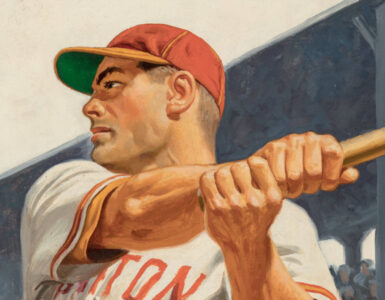Pulp magazines have influenced writers, artists, film directors, software developers, and countless others over the years. Our “PulpFest Profiles” focus on contemporary creators who have drawn inspiration from these rough-paper fiction magazines.
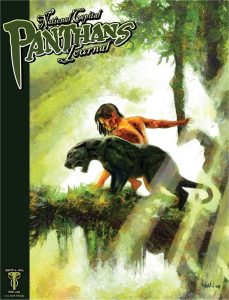
William Patrick Maynard (WPM): Mark Wheatley is not only a renowned illustrator, but also a successful and prolific writer, editor, and publisher. An indefatigable independent spirit, Mark is also the inventor of color production technology, now a standard in the comics industry.
Mark, I first consciously discovered your work from your adaptation of Terry Gilliam’s 1989 film, The Adventures of Baron Munchausen. A film I truly love as I do nearly everything Gilliam. A few years later I found your work in Heavy Metal, Epic Illustrated, and Marvel Fanfare. I started to take note of you as a name I wanted to recall. The impression formed by those early works is still how I perceive your work today. A fiercely independent talent who has the gifts and discipline to cross over to the mainstream without sacrificing his artistic integrity.
Mark Wheatley: I too love Terry Gilliam’s work. But, working on The Adventures of Baron Munchausen was not quite the joy I hoped it would be. We had to do the entire first issue without a script or seeing the film. And then when the project was complete and published, we ran into the problem of the publisher not paying us. Being independent means constantly working to keep a cash flow going. Often, I’ve produced projects of my own that might have seemed risky, simply because I figured I had a better chance of getting paid from a distributor than some other publisher. Fortunately, I have just enough head for business that I’ve at least had that option!
WPM: Though your biggest impact has been with your original work in the comics field, you’ve also worked with many licensed properties. Tarzan the Warrior and Jungle Tales of Tarzan were projects you worked on in different decades of your career. It is obvious you love classic characters such as this, did you feel your approach changed in the decades between these two versions of Burroughs’ Jungle Lord?
Mark Wheatley: One thing that has not changed is my love for the works of Edgar Rice Burroughs. Tarzan has a special place in my heart because I grew up in a suburban area where the land had been reclaimed from the Great Dismal Swamp. But the swamp was still there, just beyond the backyard. I spent my childhood roaming the swamp, building treehouses, and sharing the game trails with snakes, frogs, possums, raccoons, and even moonshiners. Reading those original Burroughs Tarzan books, the stories seemed very believable to me.
I’ve been very fortunate to have had the opportunity to play with many of my favorite characters. Tarzan tops the list. The Tarzan the Warrior series had me as editor/producer/author. Since I was also producing and editing the entire line of Tarzan comics, there was little chance for me to do any art. And the result was very much a collaboration with Henning Kure and the ever-shifting needs of the moment. Originally planned as a 4-issue mini-series, Tarzan the Warrior hit a snag with the 3rd issue. I was following my approved plot for the series when we were notified that another license holder felt our story was conflicting with something they had planned. Suddenly our planned ending was rejected. So, I wrote the 3rd issue as a holding pattern while we scrambled to find a new ending that would be satisfying for the readers and fit all the tightly planned details that had been planted in the first two issues. Not my favorite way to work, but I think Neil Vokes and I were able to brainstorm a good conclusion, thanks to Henning allowing us an additional issue to pay it off.
Jungle Tales of Tarzan was far more satisfying. I was able to work as an artist. And I was illustrating my favorite of the short Tarzan tales, “The Nightmare.” I also had the wonderful script by Martin Powell that brilliantly compressed the story into just a few pages of visuals. I’m still very happy with the result.
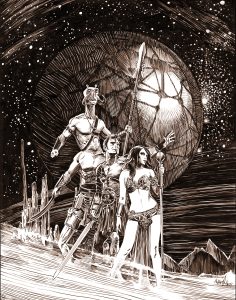 WPM: You also were closely involved with two different Dracula titles in a relatively short period of time. Tell me about Blood of Dracula and Dracula in Hell.
WPM: You also were closely involved with two different Dracula titles in a relatively short period of time. Tell me about Blood of Dracula and Dracula in Hell.
Mark Wheatley: Blood of Dracula was born from our Blood of the Innocent mini-series, which was the first weekly published comic book series in the United States, pitting Dracula against Jack the Ripper. Originally Ricky Shanklin’s concept, the two of us collaborated on the script. And Marc Hempel and I collaborated on the art. That series sold well and fans wanted more of our Dracula. So Ricky Shanklin pitched the anthology concept that became Blood of Dracula. It was fun, and it also became a training ground for young talent coming into Insight Studios. Adam Hughes got his start there.
Dracula in Hell was a late-game effort to ignite new interest in the series. We had a nice long run on Blood of Dracula for an independent title, but the market was getting very competitive and we were searching for ways to grab attention. We also started Big Bad Blood of Dracula at about that same time, for the same reason. Big Bad had more of a sense of humor. Dracula in Hell was more adult and raw.
WPM: A project of yours that seems slated for rediscovery is Frankenstein Mobster. Tell us a bit about your approach to this unique take on the classic character.
Mark Wheatley: Absolutely! The Monsterama Audio Drama version of Frankenstein Mobster is due out any minute now on Audible. I love the adventure quality in older styles of horror. I think the Karloff Frankenstein films are good examples, as is the original King Kong. So I aimed for that kind of tone with Frankenstein Mobster. But I also am telling stories that deal with the immigrant experience, coming to a new world, and making a new life. In Frankie’s town, Monstros City, the immigrants are mummies, witches, warlocks, giants, vampires, and every kind of monster the old world has. But there is a lot of crime. The mobs don’t like the immigrants. So a young detective named Terri Todd finds she is competing with the Frankenstein Mobster to set things right. This first graphic novel is called Made Man and that’s the story that has been adapted into eight audio drama episodes, starring Daniel Roebuck and Debbie Rochon. Mark Redfield is producing, writing, and directing, as well as performing a multitude of roles (he is the man of a thousand voices.) I also have a part in the series. And making us all sound wonderful is Jennifer Rouse. Jen is editing a sprawling cast into a cohesive drama, as well as composing an all-original music soundtrack. She is a fantastic talent. I feel very lucky to have Redfield Arts bringing my Frankie to life!
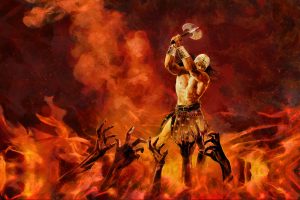 WPM: I wanted to make sure we discussed Jimgrim and the Devil at Ludd, a one-off from 1999 that seemed designed to position Talbot Mundy’s works for rediscovery. He is an author whose work is as rich as Edgar Rice Burroughs and Robert E. Howard, but whose books are just not afforded the respect they deserve. I cherish this Insight Studios publication, but it is also bittersweet in that it is the only one of its kind.
WPM: I wanted to make sure we discussed Jimgrim and the Devil at Ludd, a one-off from 1999 that seemed designed to position Talbot Mundy’s works for rediscovery. He is an author whose work is as rich as Edgar Rice Burroughs and Robert E. Howard, but whose books are just not afforded the respect they deserve. I cherish this Insight Studios publication, but it is also bittersweet in that it is the only one of its kind.
Mark Wheatley: Yes, sadly, our planned Talbot Mundy series got derailed just as it was starting. We were doing it largely as a labor of love, with low expectations on profit. I was working with Brian Taves who was providing wonderful background materials on Mundy and the stories. My plan was to organize the books into the series they actually were. They were originally published in books as mostly stand-alone novels and collections. And they did well. Mundy was very successful in his day. But over the years, he did not have a family or estate curating and maintaining his works as did Burroughs or Howard. Also, as the years passed, the decision to obscure the series nature of his works missed a great opportunity to generate interest. Brian and I worked out the publishing list. We were ready to publish a lot of books.
Jimgrim and the Devil at Ludd did well. We actually earned a bit of profit. I had the next book pretty much ready, with most of the work for my illustrations done or started. Unfortunately, the other artist, Frank Cho, was not moving forward on his part. And his growing popularity at the time was likely the reason we didn’t lose money on Ludd. So, we waited. And the short delay went on and on. Eventually, I decided to either do all the illustration work myself or seek another artist. But about the same time, many of Mundy’s works were being scanned and posted to the internet for free. Our opportunity to actually have a viable publishing line had passed. I was thrilled to have been able to illustrate the one book. But I was frustrated I never got to introduce the world to my vision of Yasmini.
WPM: After discussing Jimgrim, I wanted to ask you about Jonny Quest, a property that seems to owe as much to Terry and the Pirates as it does Jack Armstrong (the radio program that Mundy also wrote for). Tell me about your work with Jonny Quest and if you feel the same thread weaving through it from Mundy to Milton Caniff. After you touch on that, I know you’re an Al Williamson fan, what about Alex Raymond? Would you jump at the chance to pay homage to the classic Flash Gordon if it came your way?
Mark Wheatley: Certainly there is Caniff and Terry and the Pirates DNA in Jonny Quest, along with a solid dose of James Bond. I was glued to the TV when Jonny Quest first hit Prime Time in the early 1960s, even though I was a bit too young to follow all the details of the stories. Still, I was hooked and watched those shows many times over the years. When Comico announced they had the license, I started to lobby Gerry Giovinco and Diana Schutz to let me have a crack at an early issue. By the time we delivered the 3rd issue, Comico was getting frustrated at all the scheduling problems the rotating creative list was causing and they offered the series to Marc Hempel and me. Bill Loebs was delivering solid scripts and we had a lot of fun with the series. The added bonus was connecting with Doug Wildey. Due to the unique contract we had for the series, we retained the copyright to the art (but not the trademarked likenesses.) So, in the 1990s we shuffled the pages and, working with Allan Gross, we put out a new series titled Doctor Cyborg. It was a somewhat subversive take on the Jonny Quest formula. Doctor Cyborg was successful enough to spawn a web strip and a 2nd graphic novel with new art by Adrian Salmon and Mike Oeming.
As for Flash Gordon, I am a big fan of the Raymond strip. Al Williamson’s King Comics introduced me to the character. In 1970, while I was in high school, I attended the New York Comic Con and cosplayed as Flash Gordon. Author Lin Carter came as Ming and we made a team. There are photos in fanzines still out there! My costume also attracted the attention of James Warren who was a huge Flash fan. He ended up hanging out with me one evening, talking comics and instructing me on how to leap about like Buster Crabbe. My first fan comic in my fanzine, Nucleus, was Alex Wilson. This was my take on the Flash Gordon strip, titled to evoke the names of Alex Raymond and Al Williamson. Alas, I’ve never had an official chance to create any Flash Gordon material.
WPM: Mark, what other ambitions do you have yet to fulfill? What is next in the pipeline from Mark Wheatley in 2022 and beyond?
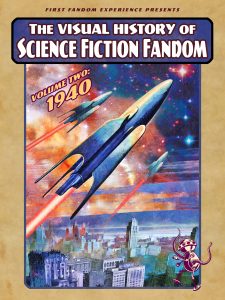 Mark Wheatley: Well, I just became a TV producer on one of my own properties for an A-list team. That is likely to eat a good deal of my time in the next year or so. But I’m most excited by the work I’ve been doing for First Fandom on their Visual History of Science Fiction Fandom series, and the illustration and design I’m creating for the uniform edition of Robert E. Howard’s works from the Robert E. Howard Foundation. This was set in motion by the Songs of Giants book I did a few years ago, illustrating the poetry of Robert E. Howard, H. P. Lovecraft, and Edgar Rice Burroughs. I’ve also been enjoying working with Meteor House on their excellent Phillip Jose Farmer books, with The Monster on Hold as a bucket list item, since it is the next book in the Secrets of the Nine series. I was pleased to design and illustrate Blood on the Blade for Flinch! Books. And my most recent project, the Edgar Rice Burroughs Visions of Adventure portfolio has been exceptionally successful, selling at a fast clip. I expect all copies to be gone before the end of the year. I’ll have that on sale at PulpFest 50. And I am honored to have one of my illustrations of John Carter and the Heroes of Barsoom included in the Norman Rockwell Museum touring exhibition; Enchanted: A History of Fantasy Illustration. The show next opens at Hunter Museum of American Art, Chattanooga, TN, May 20, 2022 through September 5, 2022. And then at the Flint Institute of Arts, Flint, MI, September 23, 2022 through January 8, 2023. I’m also a special guest of the San Diego Comic-Con this July. And in August my Breathtaker Exhibition opens at McDaniel College, MD. There is actually more going on, but I suspect no one is reading this far down the list. So, enough.
Mark Wheatley: Well, I just became a TV producer on one of my own properties for an A-list team. That is likely to eat a good deal of my time in the next year or so. But I’m most excited by the work I’ve been doing for First Fandom on their Visual History of Science Fiction Fandom series, and the illustration and design I’m creating for the uniform edition of Robert E. Howard’s works from the Robert E. Howard Foundation. This was set in motion by the Songs of Giants book I did a few years ago, illustrating the poetry of Robert E. Howard, H. P. Lovecraft, and Edgar Rice Burroughs. I’ve also been enjoying working with Meteor House on their excellent Phillip Jose Farmer books, with The Monster on Hold as a bucket list item, since it is the next book in the Secrets of the Nine series. I was pleased to design and illustrate Blood on the Blade for Flinch! Books. And my most recent project, the Edgar Rice Burroughs Visions of Adventure portfolio has been exceptionally successful, selling at a fast clip. I expect all copies to be gone before the end of the year. I’ll have that on sale at PulpFest 50. And I am honored to have one of my illustrations of John Carter and the Heroes of Barsoom included in the Norman Rockwell Museum touring exhibition; Enchanted: A History of Fantasy Illustration. The show next opens at Hunter Museum of American Art, Chattanooga, TN, May 20, 2022 through September 5, 2022. And then at the Flint Institute of Arts, Flint, MI, September 23, 2022 through January 8, 2023. I’m also a special guest of the San Diego Comic-Con this July. And in August my Breathtaker Exhibition opens at McDaniel College, MD. There is actually more going on, but I suspect no one is reading this far down the list. So, enough.
WPM: Mark, you remain one of the Last of the Independents. As a Charley Varrick fan, I mean that as nothing but a compliment. You live your art in all you do. This conversation, like our interactions at conventions, has been a true pleasure. Thank you, most sincerely, for sharing your art with the rest of us.
Since his teen years, Mark Wheatley has been a fan of the works of Edgar Rice Burroughs, Robert E. Howard, Leigh Brackett, Edmond Hamilton and other pulp authors. His career as an illustrator, TV development artist, and graphic novelist has earned him many awards including the Eisner, Inkpot, Mucker, Gem, Speakeasy, Golden Lion, and the Robert E. Howard Foundation Outstanding Achievement as well as nominations for the Harvey and the Ignatz. He is also an inductee to the Overstreet Hall of Fame. His work has often been included in the annual Spectrum selection of fantastic art and has appeared in private gallery shows, as well as The Norman Rockwell Museum, Toledo Museum of Art, Huntington Art Museum, Fitchburg Art Museum, James A. Michener Art Museum and the Library of Congress where several of his originals are in the LoC permanent collection. He has designed for Lady Gaga, The Black Eyed Peas, ABC’s Beauty and the Beast, and Square Roots, as well as Super Clyde, The Millers, and 2 Broke Girls on CBS. His most recent print projects include The Monster on Hold, Songs of Giants, Doctor Cthulittle, Tarzan and the Dark Heart of Time, Swords Against the Moon Men, The Philip Jose Farmer Centennial Collection, Mine!, and Wild Stars. Past creations include Return Of The Human, EZ Street, Lone Justice, Mars, Breathtaker, Black Hood, Prince Nightmare, Hammer Of The Gods, Blood Of The Innocent, Frankenstein Mobster, Miles The Monster, Skultar, and Titanic Tales. His interpretations of established characters such as Tarzan, Dick Tracy, The Green Hornet, The Adventures of Baron Munchausen, Jonny Quest, Dr. Strange, The Flash, Captain Action, Argus, The Spider, Stargate Atlantis, The Three Stooges, Doctor Who, and Torchwood have brought them to life for a new generation of readers. He has written for TV, illustrated books, designed cutting-edge role-playing games, hosted a weekly radio program, and was an early innovator of the online daily comic strip form. But his passion remains with his roots and the worlds and characters from the pulps.
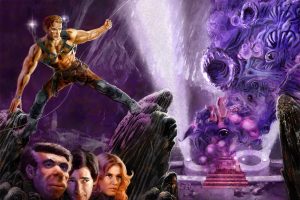 Want to learn more about Mark Wheatley and his work? You’ll find his official website at markwheatleygallery.com. You can also get in touch with him through his Facebook page.
Want to learn more about Mark Wheatley and his work? You’ll find his official website at markwheatleygallery.com. You can also get in touch with him through his Facebook page.
William Patrick Maynard is the licensed continuation author for the Sax Rohmer Literary Estate. His short fiction has been published in anthologies by Airship 27, Bold Venture Press, Black Coat Press, Flinch Books, MX Books, Riviere Blanche, and Titan Books. He has authored over 250 articles for numerous magazines and websites. He has contributed Blu-ray commentary tracks and produced bonus features for releases by MGM, Shout Factory, Kino Lorber, and The Serial Squadron. Bill is on the editorial board of The Battered Silicon Dispatch Box and is a member of the PulpFest Organizing Committee where he serves as Assistant Director of Marketing and Afternoon Programming Director. He resides in Northeast Ohio.
In 2018, the Insight Studios Group published Doctor Cthulittle, “a whimsical and terrifying illustrated story filled with Lovecraftian horrors, cosmic wonders, and adventure beyond space and time,” that was written by G. D. Falksen and illustrated by Mark Wheatley.
The National Capital Panthans is the Washington, Annapolis, and Baltimore area chapter of the Burroughs Bibliophiles, the worldwide organization of collectors of the works of Edgar Rice Burroughs. The National Capital Panthans Journal is distributed only to those attending chapter meetings and/or submitting contributions to the publication. Pictured here is the March 4, 2017 issue of the journal, depicting Tarzan and Sheena, a black leopard. It’s number 245 of the National Capital Panthans Journal, with cover art by Mark Wheatley.
The line art is set on the surface of Barsoom and was created for the Norman Rockwell Museum’s touring exhibition of Enchanted: A History of Fantasy Illustration, 2022.
Dust jacket art for The Collected Letters of Robert E. Howard, Volume 3, The Robert E. Howard Foundation, 2021.
Dust jacket art for The Visual History of Science Fiction Fandom, Volume Two: 1940, First Fandom Experience, 2021.
Dust jacket art for The Monster on Hold, by Philip José Farmer and Win Scott Eckert, Meteor House, 2021.
All of our images are copyright © by Mark Wheatley. All rights reserved. Used with permission.

